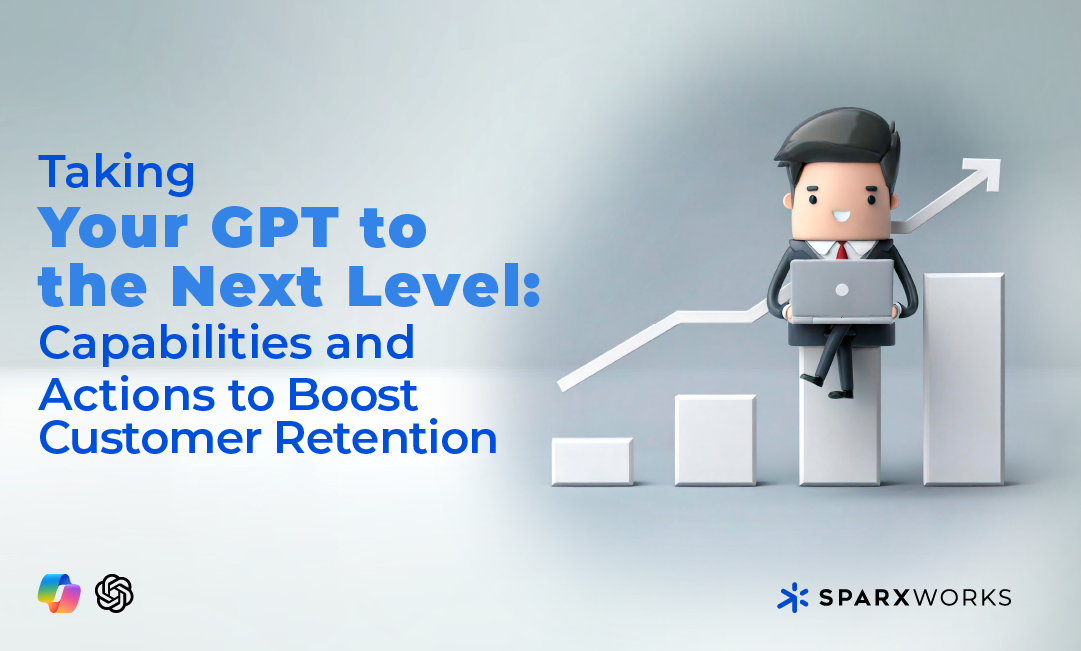Part 2 – Taking Your GPT to the Next Level: Capabilities and Actions to Boost Customer Retention
29 Jan 2025, Posted by in AI, Technologies
In my last article, “Easy step by step instructions to build your own AI chatbot to increase customer retention” we explored how to set up a GPT for creating polished, on-brand customer materials. Now, let’s take it a step further by leveraging the “Capabilities” and “Actions” features in the GPT builder interface to amplify customer retention strategies.
These features are designed to enhance your GPT’s functionality, enabling it to perform tasks, analyze data, and respond in ways that directly impact customer engagement and satisfaction. Using the same customer retention use case from my January 16 post, “AI Made Easy: Your First Steps to Building a GPT for Work or Innovation” we’ll explore how these tools can take your AI assistant from useful to indispensable.
Step 1: Understanding the “Capabilities” Feature
Capabilities define what your GPT can “know” and “do.” By tailoring these settings, you empower your GPT to access and use the information it needs to deliver value in customer-facing tasks.
Enhancing Capabilities for Customer Retention:
- Access to Customer Data:
- Integrate your GPT with your CRM systems (e.g., Dynamics 365 or Salesforce) to access customer profiles, purchase histories, and communication records.
- Use this data to tailor responses, making every interaction feel personal and relevant.
- Knowledge Base Integration:
- Add FAQs, product documentation, and service guidelines to your GPT’s knowledge base.
- For example, your GPT can provide instant answers to customer questions, reducing wait times and improving satisfaction.
- Real-Time Insights:
- Connect your GPT to business intelligence tools (like Power BI) to retrieve and analyze customer data trends.
- Use these insights to craft targeted proposals or recommend proactive solutions to recurring customer issues.
Step 2: Leveraging the “Actions” Feature to Boost Retention
Actions enable your GPT to perform specific tasks, such as creating documents, sending emails, or scheduling follow-ups. These features help automate and streamline workflows.
Actions to Improve Customer Engagement:
- Automated Follow-Ups:
- Configure your GPT to draft follow-up emails after meetings or customer interactions.
- Example: “Send a follow-up email to [Customer Name] summarizing the discussion and including next steps.”
- Dynamic Document Creation:
- Use pre-configured templates for proposals, RFPs, and marketing materials.
- Your GPT can automatically pull customer-specific data from your CRM and format it into a polished document.
- Task Management and Reminders:
- Integrate with Microsoft Teams or Outlook to create and assign tasks based on customer requests.
- Example: “Remind the sales team to check in with [Customer Name] on [Date] regarding their recent inquiry.”
- Live Customer Support Assistance:
- Equip your GPT to provide real-time guidance during customer interactions.
- Example: During a Teams call, your GPT can suggest relevant solutions or provide quick access to product details based on the discussion.
Bringing It All Together
By combining Capabilities and Actions, you can transform your GPT into a full-scale Customer Retention Assistant. Let’s revisit the customer retention goals from my January 9 article and see how these features come to life:
- Creating High-Impact Customer Materials:
Your GPT pulls customer data, applies templates, and generates polished proposals or follow-ups automatically. - Meeting Preparation and Insights:
It summarizes past interactions, highlights pain points, and suggests targeted questions, ensuring your team is always prepared. - Faster, More Thoughtful Responses:
With access to your knowledge base and CRM, your GPT drafts empathetic, personalized responses, helping you resolve issues efficiently.
What’s Next?
To fully unlock the potential of these features, start small. Choose one workflow—such as automated follow-ups—and test how well your GPT performs. Refine its capabilities and actions based on real-world feedback, then scale up to more complex tasks.
By customizing capabilities and actions, your GPT doesn’t just support your team—it becomes an essential part of your customer retention strategy.




